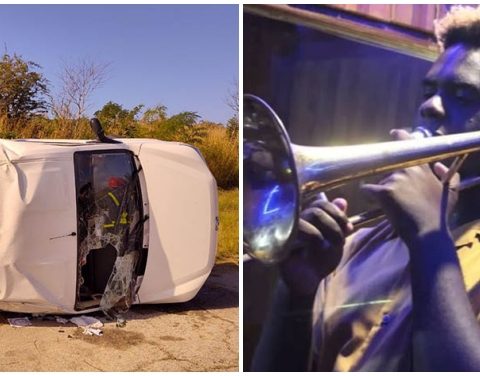More than once this editor has written in Cuba Si about the polymita picta, especially moved by its impressive beauty.
And now it turns out that in addition to being beautiful, they are also unique for other reasons, and all determine that this endemic Cuban snail is today one of five contenders for Mollusk of the Year 2022 status in the contest promoted by the Loewe Center for Translational Genomics of Biodiversity (TBG), in Germany.
From February 25 to March 15, voting takes place on the official site of the TBG where Internet users in general will be able to cast their vote for one of the five candidates. The Mollusk of the Year 2022 will be announced on March 18 in an official press release.

Photo: taken from allspira.com
From among fifty nominees around the world, the five species of molluscs in competition were chosen by a jury of scientists from the Senckenberg Natural History Museum in Frankfurt; the Loewe Center, and the World Society for Mollusc Research.
Candidates to be Mollusk of the year 2022
1-Fustiaria rubescens. Known as bargefoot, this scaphopod is usually found mainly in the Mediterranean Sea and the Eastern Atlantic Ocean, inhabiting muddy bottoms, usually offshore.
2-Telescopium telescopium, also known as telescope snail or horn snail, has its native environment in the mangrove forests along the Indian Ocean.
3- Cymbulia peronii, the sea butterfly, spends its entire life adrift in the open sea, which is why it has been reported in all the world’s oceans, below 200 meters deep.
4- Teredo navalis. Although they call it the naval worm, it is a clam that, in past times, used to feed on the wooden hulls of ships. It lives throughout the world throughout the tropics and subtropics, anywhere there is a lot of wood in the water.
5- Polymita picta, the painted snail. Cuban snail in danger of extinction and famous for its shell of various colors and its enigmatic ‘love dart’.
As you, who are now reading these lines, can still vote, here we leave you more information about very unique aspects – almost amazing for those who are not familiar with the subject – that distinguish our polymita, which last year obtained second place in the votes.
If chosen, an assembled genome of this iconic species would provide the basis for understanding the evolutionary origin of shell color variation and “love dart” firing behavior.
Furthermore, since snails are in danger of extinction, due to habitat loss and poaching, genomic resources would help establish conservation units, ultimately protecting this species and, like an umbrella, would also serve to protect to other species in the same habitat, argues the Loewe Center.
A dart of love between colors
As amazing as it is, it is not enough for the polymita picta to be beautiful and it has unique mating behaviors as a hermaphrodite animal incapable of self-fertilization.
In addition to having the longest mating duration of any Polymitas species investigated to date, lasting about 4 hours, the picta employs a dart as an accessory reproductive device during courtship, copulation, and post-copulation.

Photo: taken from tecreview.tec.mx
With this dart, he rubs, wipes and stabs, above all, the anterior region of his partner’s body and they do it reciprocally.
This behavior has nothing to do with sadomasochistic intentions, unthinkable in that evolutionary range. A group of authors published in the Journal of Molluscan Studies of the Oxford Academy the substantial research Mating, dart shape and sperm morphology of the Cuban Polimita picta,where they explain that the function of the dart is to inject accessory gland products into the couple to improve the survival of the spermatophores.
Polymita picta is not the only land snail to use a dart device. For example, Euhadra subnimbosa uses it repeatedly at a rate of 2.52 stabs per second. In favor of the Polymita picta and as a peculiarity of its mating, they point out that it uses this device with a lower frequency, between 0.04 and 1.05 stabs per minute.
What explains this lower frequency is that Polymita picta lives in mountainous areas of eastern Cuba, with abundant rainfall; hence it is less exposed to stressful weather conditions such as drought.

Different views of the dart. Photo: taken from elabrevaderojm.com
This appears to be reflected in their mating behavior as they are under less selective pressure to conserve energy and/or reduce the risk of dehydration during copulation and mating in general than other Polymita species.
The cited study reports that in most of the helicoid families the dart apparatus is associated with a single mucous gland while Polymita picta carries two types of mucous glands, and it is possible that the products of both glands are transferred through the dart apparatus. darts.
“In contrast to stabbing, rubbing and wiping could prevent sexual conflicts between couples, because they do not cause direct damage, that is, they are not traumatic,” the scholars clarify.
Lots of stripes, lots of beauty
The word Polymita is made up of two roots derived from the classical Greek language: poly, which means a lot; and myth that is equivalent to line. For what amounts to many stripes, which is precisely what distinguishes those shells painted with the most incredible colors.

Photo: taken from radiobaracoa.icrt.cu
Precisely the word picta, which has its origin in pictus, from the Latin; means painted.
The official site that sponsors the nomination indicates that it is “possibly the most beautiful snail in the world.”
And this wonderful and unique little Cuban animal, which lives between one and two years, is now waiting to be crowned Mollusk of the Year 2022. Your vote also counts and could definitely tip the scales. Click here to go to the site and do justice to such beauty.
















